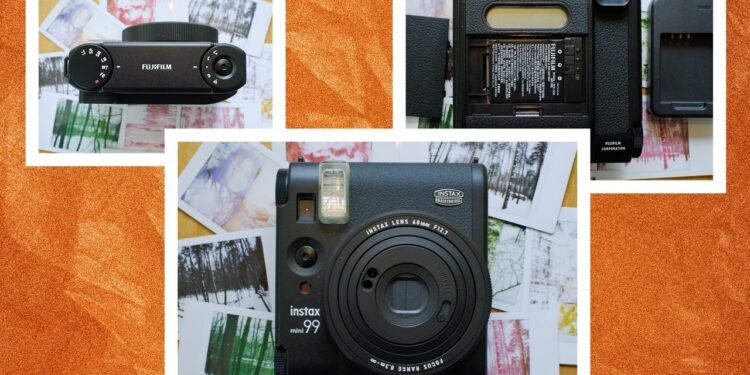Fujifilm’s New Instax Mini 99 is an Instax camera for those who love manual controls and creative effects. It’s not the sharpest Instax I’ve tested—that remains the Mini Evo—but it might be the most analog and the most capable.
The $200 price tag is well above the entry-level point-and-shoot Instax cameras, but here you get exposure and shutter control, a swatch of color effects, and even the ability to simulate light leaks, like the ones you get with those thrift store cameras collecting dust on your shelf.
Manual Power
Except for the colorful and bubbly entry-level cameras, Fujifilm’s Instax design usually tends toward a retro-camera vibe, which holds true for the Mini 99. The 99 is all-black instead of the silver and black found in the Mini 90, but otherwise bears more than a passing resemblance to the older model. Fujifilm hasn’t officially said the 99 replaces the 90, but they feel close enough to each other that I’d be surprised if the Mini 90 continues for long.
Photograph: Scott Gilbertson
The lens of the Mini 99 is the same as the Mini 90. It’s a 60-mm lens made of plastic. It works out to roughly the same field of view as a 35-mm lens in 35-mm format (or if you prefer, somewhere between 1x and 2x on your iPhone). The shutter is fixed at f/12.7, which means you’ll be relying on the flash in all but bright, sunny, outdoor shots. That said, unlike quite a few other Instax models, with the Mini 99 you can turn off the flash for those well-lit shots.
Perhaps the most interesting part of the Mini 99, and something new for the Instax line, are the manual focus options. The Mini 99 does not have true manual focus where you turn a dial on the lens to get precise focus. Instead there are three zones of focus: close up (0.3 to 0.6 meters), midrange (0.6 to 3 meters), and infinity (3 meters to infinity). For those not metric-savvy, that works out to 1 to 2 feet, 2 to 10 feet, and 10 feet to infinity. While that’s not as precise as a true manual focus camera, it’s more control than you typically get with Instax.
I find the manual focus to be a little inconsistent—or rather, the results were less dramatic than I expected. Keep in mind that the aperture is f/12.7, which means the plane of focus will be pretty wide, even with the focus zone controls. The Mini 99 is capable of bokeh (the name for out-of-focus regions in a photo), but only in very specific situations like a portrait, and even then you have to use the closest focus, which means your subject’s face will mostly fill the frame anyway. That said, being able to play with focus at all is a step up from most Instax cameras, where focus is fixed, and the 1-foot close focus distance of the Mini 99 is nice for macro-style shots. Unlike some Instax cameras, there is parallax correction in the viewfinder so that what you see in the frame is very close to what you get.











